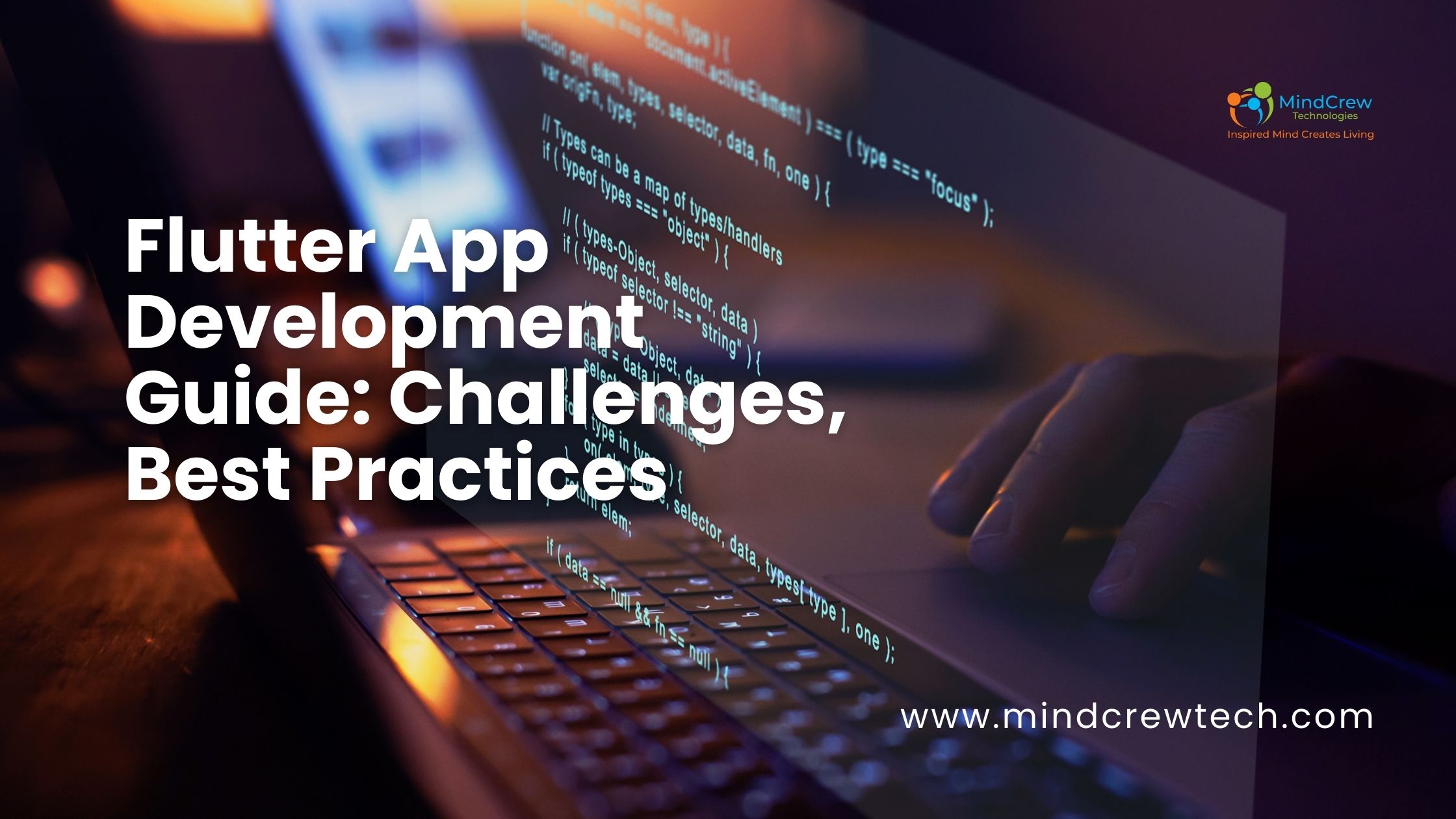Flutter App Development Guide: Challenges, Best Practices
The mobile app landscape is a battlefield. Every day, countless apps vie for user attention, and only the most engaging and well-crafted ones survive. But what if there was a way to build exceptional apps that work seamlessly across different platforms? Enter Flutter, a revolutionary open-source framework from Google, that’s changing the game for app developers.
This guide equips you with the knowledge to navigate the exciting world of Flutter app development. We’ll delve into the potential roadblocks you might encounter and illuminate the best practices to ensure your app conquers the mobile realm.
Why Flutter? A Love Letter to Cross-Platform Development
Imagine a single codebase that effortlessly translates into stunning, high-performance apps for both iOS and Android. That’s the magic of Flutter. Here’s why it should be your weapon of choice:
- Cross-Platform Prowess:
Ditch the siloed approach of building separate apps for different platforms. Flutter empowers you to create a single codebase that renders beautifully on both iOS and Android devices. This translates to significant savings in time and resources.
- Hot Reload – Your Development BFF:
Say goodbye to tedious development cycles. Flutter’s hot reload feature lets you see your code changes reflected in the app almost instantly, accelerating the development process and boosting your productivity.
- A Flutter of Widgets:
Gone are the days of wrestling with platform-specific UI components. Flutter boasts a rich set of customizable widgets that empower you to design intuitive and visually captivating user interfaces.
- Native Performance, Supercharged:
Flutter apps don’t compromise on performance. They’re compiled ahead-of-time, resulting in native-like experiences that are smooth, responsive, and a joy to use.
- A Thriving Community:
You’re not alone in this Flutter adventure. The framework boasts a passionate and ever-growing community of developers, designers, and enthusiasts who are always willing to lend a helping hand.
The Path Less Travelled: Challenges in Flutter App Development
While Flutter offers a plethora of advantages, it’s not without its challenges. Here are some potential roadblocks to be aware of:
- The Dart Learning Curve:
If you’re new to Dart, the programming language powering Flutter, you’ll need to invest some time in learning its nuances. However, Dart is a clean and modern language, making the learning curve less daunting compared to some others.
- Platform-Specific Nuances:
While Flutter excels in cross-platform development, there might be situations where you need to integrate platform-specific functionalities. This may involve writing native code, which adds complexity.
- Limited Third-Party Library Arsenal:
Compared to some mature frameworks, Flutter’s third-party library ecosystem is still evolving. However, the library landscape is constantly expanding, and you’ll likely find the tools you need for most projects.
- App Size Considerations:
Flutter apps tend to be slightly larger than purely native apps due to the framework itself being included. However, with optimization techniques, you can significantly reduce the app size and ensure a smooth user experience.
Mastering the Art: Best Practices for Flawless Flutter Apps
Now that you’re aware of the potential challenges, let’s equip you with the best practices to ensure your Flutter app soars:
- Embrace the Power of Architecture:
A well-defined app architecture forms the backbone of your creation. Organize your code into clear layers (presentation, business logic, data) to promote maintainability and scalability. Consider utilizing libraries like BLoC (Bloc Library) for effective state management.
- Befriend State Management Solutions:
As your app grows, managing its state becomes crucial. Flutter doesn’t enforce a specific state management solution, but popular options like Provider or BLoC can streamline this process. Choose the one that best suits your project’s needs.
- Test, Test, and Test Some More:
Bugs are inevitable, but a robust testing strategy can minimize their impact. Write unit tests to ensure individual components function as expected, and leverage widget testing frameworks to validate your UI’s behavior.
- Write Clean, Maintainable Code:
Always prioritize clean code practices. Use descriptive variable names, proper indentation, and modular functions to improve code readability and make future maintenance a breeze.
- Leverage the Power of Widgets:
Flutter’s widget system is incredibly versatile. Instead of nesting containers excessively, explore the use of SizedBoxes for layout purposes. This can enhance performance and code clarity.
- Design with Platform Awareness:
While Flutter promotes a unified look and feel, there are subtle differences between iOS and Android design conventions. Utilize platform-aware widgets and adapt your UI elements to adhere to each platform’s guidelines for a more natural user experience.
- Embrace the Community:
The Flutter community is a valuable resource. Don’t hesitate to seek help or share your knowledge on forums, discussion boards, or at Flutter meetups. The combined experience of this community can be a powerful asset.
- Stay Updated with the Latest Trends:
Flutter is constantly evolving, with new features and improvements being released regularly. Make it a habit to stay updated with the latest announcements and best practices. This will ensure your apps leverage the full potential of the framework.
- Optimize for Performance:
A smooth and responsive user experience is paramount. Profile your app to identify performance bottlenecks and employ optimization techniques. Utilize techniques like code splitting and lazy loading to reduce initial app size.
- Prioritize Accessibility:
Make your app inclusive for everyone. Follow accessibility guidelines to ensure users with disabilities can interact with your app seamlessly. This includes features like proper color contrast, clear text labels, and support for assistive technologies.
- Think Beyond Mobile:
Flutter isn’t just for mobile apps anymore! With Flutter Web, you can extend your app’s reach to the web platform, creating a truly cross-platform experience.
Conclusion: Flutter – Your Key to Building Winning Mobile Apps
Flutter empowers you to craft exceptional mobile apps that captivate users across platforms. By embracing its strengths, understanding its challenges, and adhering to best practices, you can unlock the true potential of this revolutionary framework.
So, are you ready to join the Flutter revolution? With dedication and the knowledge gleaned from this guide, you can build apps that stand out from the crowd and conquer the ever-evolving mobile landscape. Remember, the journey to app development mastery is an ongoing adventure. Embrace the challenges, relish the victories, and keep exploring the boundless possibilities of Flutter!







